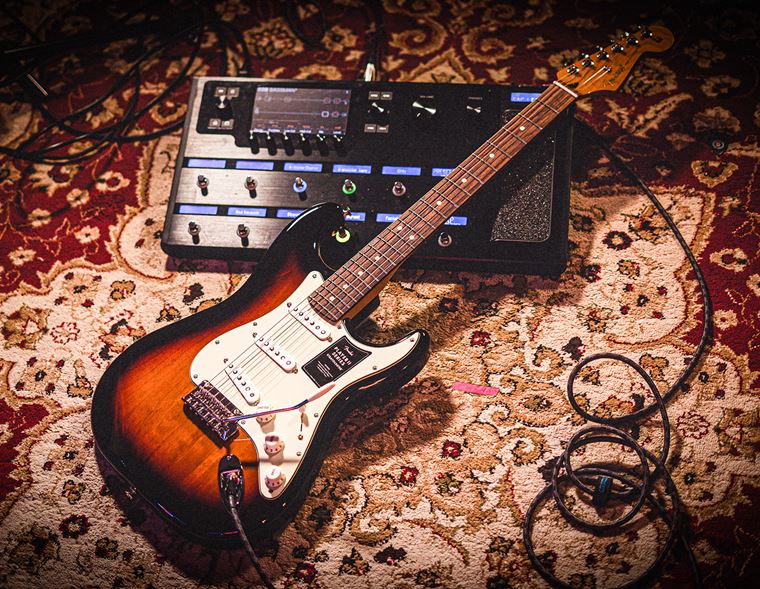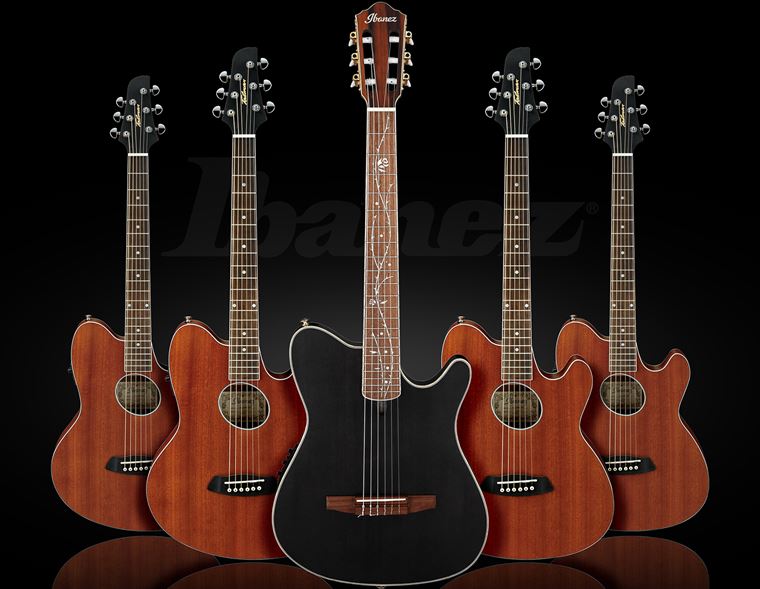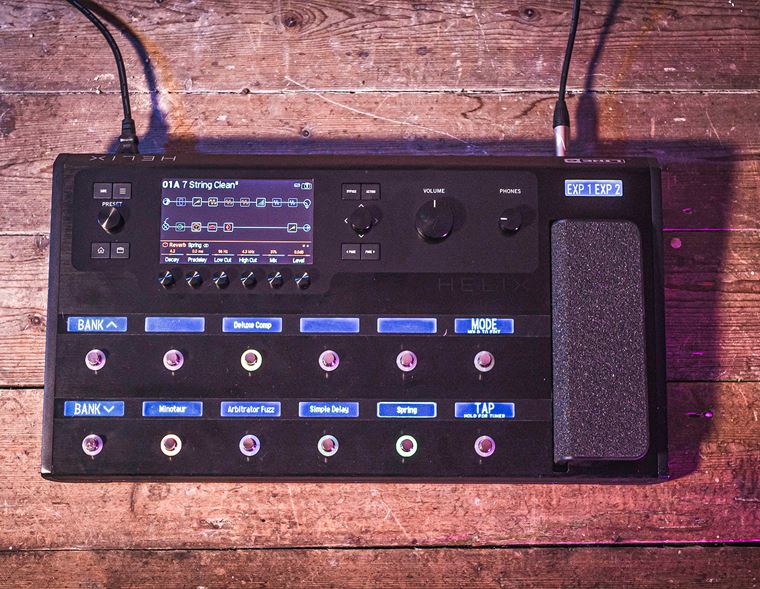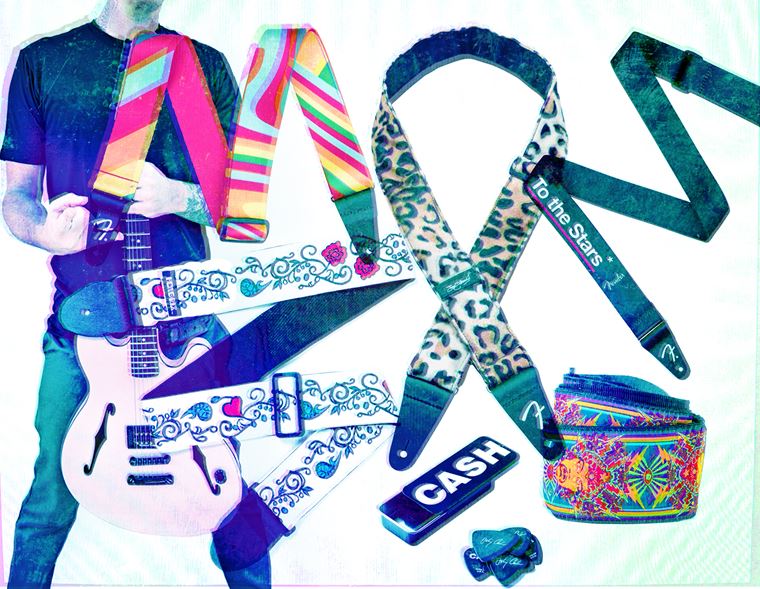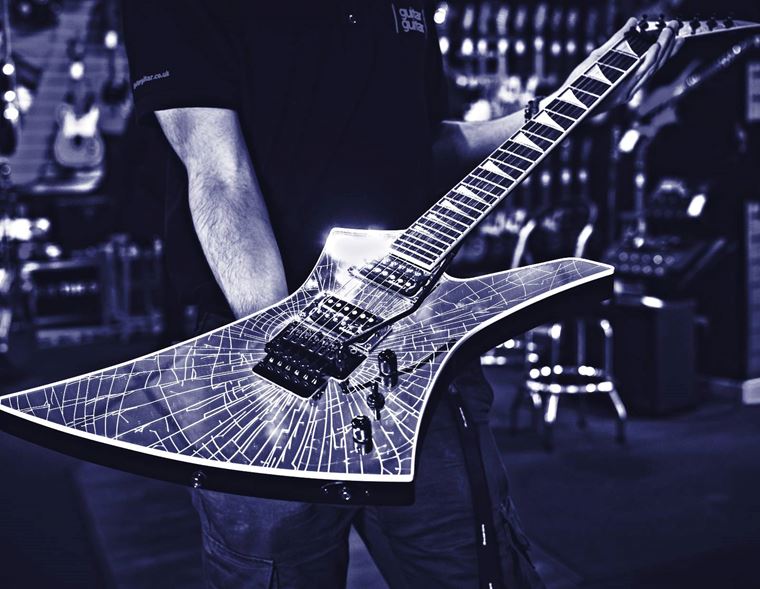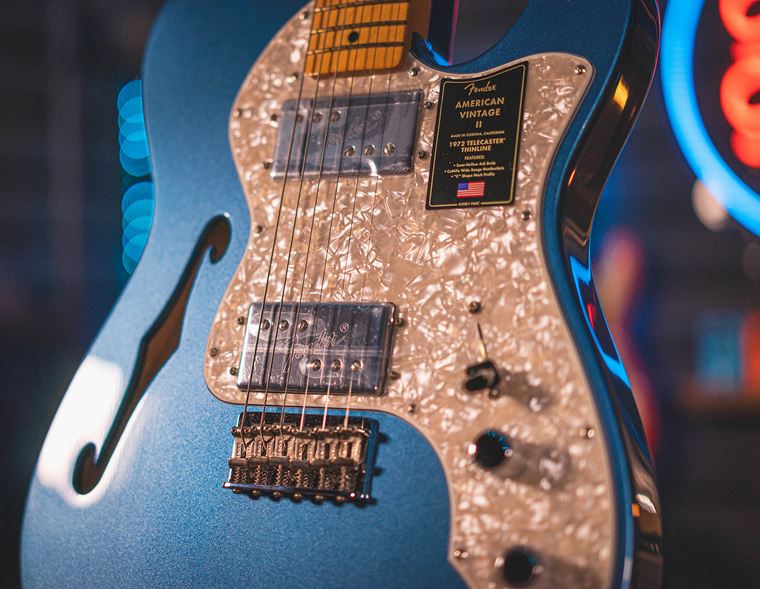The Greatest EVER Ibanez Guitarists
Published on 12 August 2024
Who springs to mind when you think of Ibanez guitars? As a brand, they’ve had a huge number of the biggest artists on the planet on their endorsee list, including many who’ve been with them for decades alongside the hottest talent from each new generation.
That tells me a few things: that Ibanez make fantastic guitars, and that they know how to attract, snare and then look after world-class players.
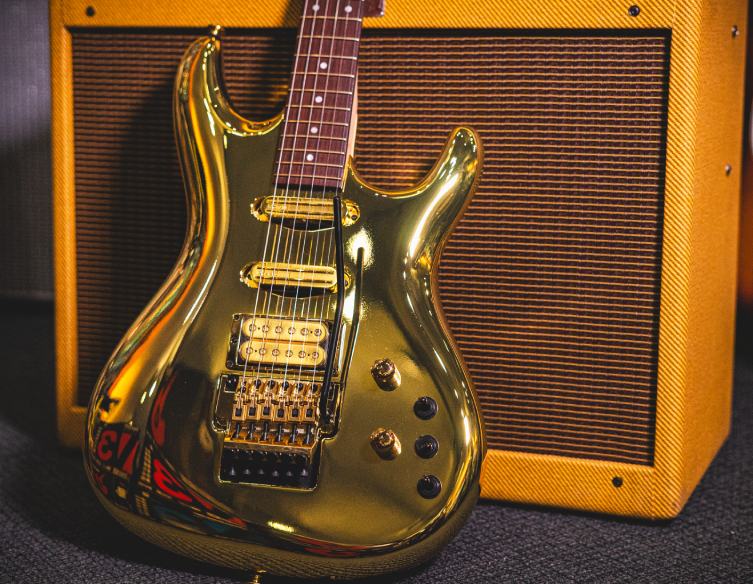
Whilst most of us will think along the lines of metal and shred when it comes to Ibanez - not unjustifiably - there’s more to the brand than that, as you can see in our Ultimate Guide to Ibanez Guitars blog. The brand’s reach is wide and deep, with artists from many styles joining their ranks. Today, I want to highlight those artists - well, some of them, anyway - in a blog that celebrates just how colourful and diverse the world of Ibanez is. From traditional jazz to outrageous shred; from blissful melody to gleeful dissonance, it’s all here! Read on, for the greatest EVER Ibanez guitarists…
Contents
Steve Vai
The top spot in a bog such as this must go to Vai. Nobody has been as visible and creative with their Ibanez endorsement than Frank Zappa’s ‘little Italian virtuoso’, and I’d maybe go as far as to say that nobody outside of maybe Paul Stanley has done more for the brand in terms of reach and influence.
When Vai chose Ibanez to be the makers of his bold JEM guitar dream in the 80s, they were behind the likes of Jackson, Charvel and Kramer in the Superstrat popularity stakes. Vai took a chance on them due to the sheer quality of a prototype they sent him. After the JEM (and subsequent RG models), they were arguably at the top of that podium, and they’ve hardly budged since.

(Photo: Larry DiMarzio/Steve Vai)
Vai’s exotic and unorthodox playing styles are masterful and demanding, requiring specifics in terms of guitar features that the likes of an off-the-shelf Strat just can’t provide. As a composer, he makes full use of the fingerboard and beyond, with a vocabulary of sounds, textures and tricks on the guitar that more or less require a next-level instrument like the JEM or PIA in order to execute. Vai’s music is particularly adventurous, with a level of expression and emotional connection that few can match.
Wherever you see a carrying handle cut into a guitar’s body, you just know it’s a JEM, and therefore, you just know it’s an Ibanez. Now THAT is iconic!
Click to Watch our Exclusive Steve Vai Video Interview
Joe Satriani
Hailed as the most successful instrumental guitarist ever, Joe Satriani is one of the few artists in his niche of music who can appeal to a wider, non-guitar audience. Joe, who taught a teenage Vai back in Long Island, Noo Yoik, was introduced to Ibanez after his student & friend found worldwide fame. Collaborating with Ibanez, Joe’s Ibanez JS guitars were with him as records like Surfing with the Alien and The Extremist blazed their way to the top of the charts.
Equally adept to Vai technically, Satriani is perhaps more straightforward in his composing style, with a direct melodicism that connects with his audience. He’s still a dazzling shred machine too, but it’s the melodies that hit the mark emotionally.
Click through for our Exclusive Joe Satriani Interviews
Jennifer Batten
One of the world’s greatest players, Jennifer Batten is best known for her ten year stint with superstar Michael Jackson. A Berkeley-trained jazz player, Batten reinvented herself as a wild-haired rocker for MJ’s tours, and became his most visible and well known band member.
Ferociously talented, Batten also has a keen ear for the outlandish, much like Vai but in a completely different direction. Her albums Beyond Boundaries and Momentum are as surprising to the ear as they are enjoyable.
Jennifer is a Suhr player nowadays, after a long stay with Washburn, but in her Michael Jackson era, it was Ibanez all the way. She put female shredders on the map in a way that she doesn’t get enough credit for, and because she did all that with Ibanez guitars, she more than qualifies for this list.
Read our Interview with Jennifer Batten
Paul Gilbert
Mr Big’s axe ace is another artist from the classic era of shred who has managed to maintain a strong career ever since. Highly famed for his technical playing, Gilbert has been leaning more into bluesier styles in recent years, and his Ibanez PGM guitars (the ones with the painted f-holes) are used less in favour of his upside-down Iceman model, the Fireman.
Paul Stanley
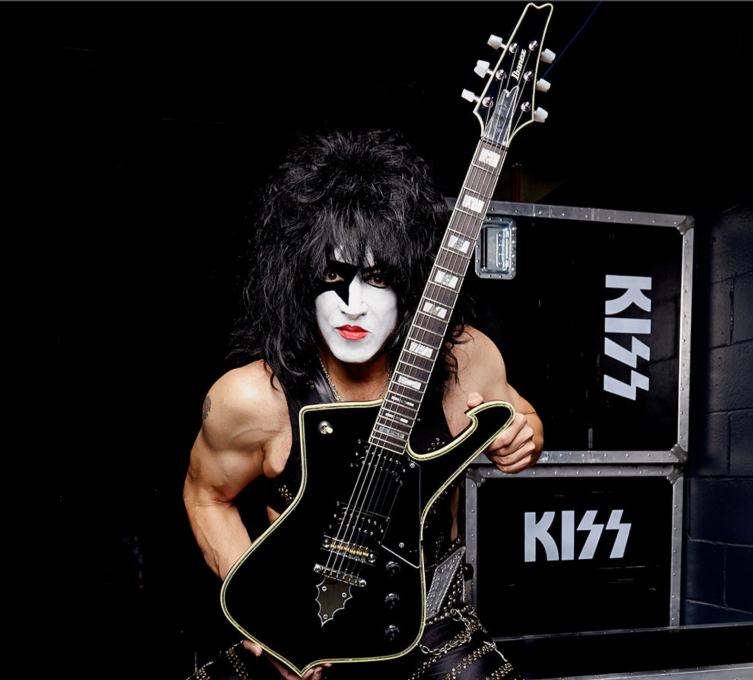
(photo: Brian Lowe/Ibanez)
The KISS frontman was probably the most visible Ibanez user until the gunslinging 80s came along and brought the world Satch ‘n’ Vai. KISS might not have been as big here in the UK as they were in the US, but their name keeps popping up as influences on all of the artists we do love, so they were obviously an immense force.
Paul Stanley’s choice of guitar was the excellently-shaped Iceman, an original design of Ibanez’s that is still in production today. If you are donning the spandex, wig and face paint, there is no better six-string to have around your neck!
Nili Brosh

(Pic: Renee Jahnke)
She’s played guitar in the Cirque du Soleil and she has recorded and toured with Hollywood composer Danny Elfman. I’m talking about Nili Brosh, of course, and she is currently one of the most interesting and inspired players around.
A master of both 6 and 7 string guitars, Ibanez is a natural fit for her adventurous, acrobatic playing. Her yellow RG550 is fast becoming a trademark, and I reckon it’s time she joined the ranks of Ibanez Signature Artists!
Click to Read our exclusive Nili Brosh Interview
Pat Metheny
When is jazz guitar not jazz guitar? When it’s performed by avant-garde master Pat Metheny! Actually, plenty of Pat’s music is relatively traditional, but he is one of those players who have pushed the guitar further on from the instrument’s safety zones.
Metheny continues to surprise, not just with his playing, but in his approach: he’s a real maverick in terms of his set up (google his recent touring rig and you’ll quickly understand my point) and his intentions. His signature Pat Metheny Ibanez hollowbody guitars are always gorgeous as well, which earns him more cool points!
George Benson
Going to the other end of jazz from Pat Metheny, we have the king of smoothness himself, Mr George Benson. Benson’s innovations on the guitar are perhaps less obvious than the likes of Metheny or Vai, but he’s no less valuable for that: Benson’s phrasing, note choice and tone are legendary, to say the least. His playing really connects with people, and he has been an Ibanez guy for over 40 years with countless signature hollowbody models to his name. A class act, through and through.
Munky
When Korn burst through in the mid-90s, they were actually a little ahead of their time. Using downtuned 7 strings and rap-influenced rhythms, the sound that they naturally developed became the humongous, all-encompassing ‘Nu Metal’ genre a year or two later.
Interestingly, although Korn were the pioneers of such a sound, nobody was really able to copy them much. Their raw sound was particularly idiosyncratic, and the two guitarists James ‘Munky’ Shaffer and Brian ‘Head’ Welch share an interwoven sound that nobody has been able to properly replicate.
Initially, both players swore by the Ibanez Universe (Vai’s 7-string model, which wasn’t getting much love in 1994 until Korn reinvented its purpose) and although Head eventually moved on to ESP, Munky remains with Ibanez to this day. Two intensely creative players, Head and Munky are underrated, despite being in one of the world’s biggest metal bands.
Tim Henson
Polyphia are proving to be having a real moment right now. For the last couple of years, theirs has been the sound of technical guitar playing: a heady mix of exoticism, video game-style melodies, and a smattering of jazz.
Unlike most instrumental rock bands, Polyphia prize the use of clean guitar tones and also nylon string sounds. Lead guitarist Tim Henson gets all of the attention (co-guitarist Scott LePage is hardly a slouch, though!) and has had a number of Ibanez signature models available, including his massively popular Tree of Death nylon string electro acoustic!
Nita Strauss

(Photo: Ana Massard/Ibanez)
Following the example of Jennifer Batten (who appeared together on the cover of Guitar World recently), Nita Strauss is flying the flag for badass shred-friendly female rockers.
Nita took over from Orianthi as Alice Cooper’s lead guitarist, and has also toured with pop star Demi Lovato, proving her diversity as a musician and performer.
That’s nothing compared to this though: her self-produced, self-engineered debut solo record Controlled Chaos hit the no.1 spot on the Billboard Mainstream Rock chart, after a successful Kickstarter project met its financial target in two hours! Impressive, eh?
And get this: Strauss was the FIRST female player to get their own signature Ibanez model?!!
Talk about a trailblazer!
Fredrik Thordendal
The only thing more clearly obvious than Meshuggah’s brutality is their genius. Truly a band who have shaped how modern metal sounds across the world, they’ve remained ahead of their peers every step of the way for over 30 years.
Both of Meshuggah’s guitarists are Ibanez players with signature models, but I’ve chosen Thordendal for inclusion on today’s list because of his highly recognisable and unusual lead guitar style. Like most Meshuggah fans, I’d agree that it is all about the riffs (my understanding is that Thordendal wrote the majority of the riffs in the 90s, with Mårten Hagström taking over since), but those otherworldly leads are in a different galaxy to most guitarists. Thordendal’s use of very unusual notes and very unorthodox technology (a breath-controlled MIDI controller for his solo on Future Breed Machine, anyone?) make his playing stand out brightly in an ocean of metallic shredders.
Developing from 6 to 7 strings, and then to mostly an 8 string (there have been 9 string moments), Thordendal’s Ibanez FTM model is surely one of the most individual signature guitars on offer?
John Scofield
Ending on a more peaceful note, my last choice for top Ibanez players is jazz pioneer John Scofield.
I say ‘jazz’, but it’s more like every genre that’s jazz-adjacent: Scofield’s a master fusion player, and adds flavours of funk, soul and blues to his incredible artistry. He came to prominence through being a member of Miles Davis’ band, no less, and has collaborated with everyone from Bill Frissel to Jaco Pastorius.
Scofield has been an Ibanez player for decades, with his main pre-signature guitar being a hollowbody AS from 1982. His own signature model is based on this (it’s essentially an ES-335 style guitar) and his range has proven consistently popular to the point where even Steve Vai and Nine Inch Nails’ Robin Finck use Ibanez John Scofield models for certain songs.
The Proof is in the Signature
Now, that is one impressive list of talent! I haven’t even included half of the current endorsers because time forbids it, but it’s clear that Ibanez are very popular with the pros.
So, what is the value of an artist signature model? I suppose that depends on the player (both of them, actually: you and them): you might simply admire an artist and want to feel closer to their art by owning the guitar with their name in it; you may want to achieve similar results to said artist and logically believe that choosing their guitar will get you those results; or you may well just see them as a marker of quality: if it’s good enough for Satch or Strauss, then it’s good enough for you!
There is a collectability aspect to signature guitars too, particularly when limited edition finishes become available. Collecting relatively recent Ibanez guitars is fun and also a lot more affordable than collecting, say, vintage Gibsons!
However you look at it (and not every player in today’s list has a signature Ibanez guitar, don’t forget), here’s my main point: some of the greatest practitioners of the electric guitar this world has ever seen have chosen Ibanez again and again to be their main instrument. Realistically, what more do you need to know?
Click to Browse our Ibanez Electric Guitars


